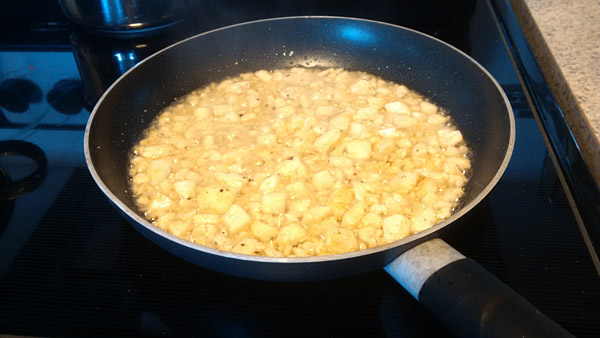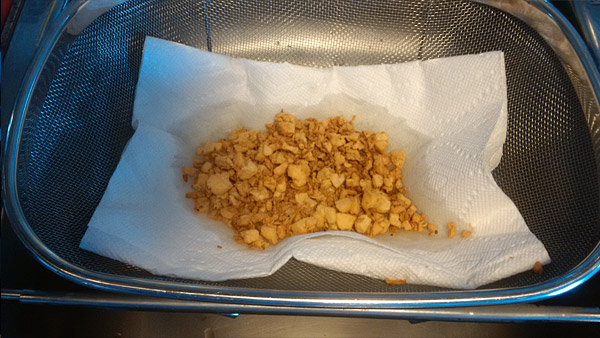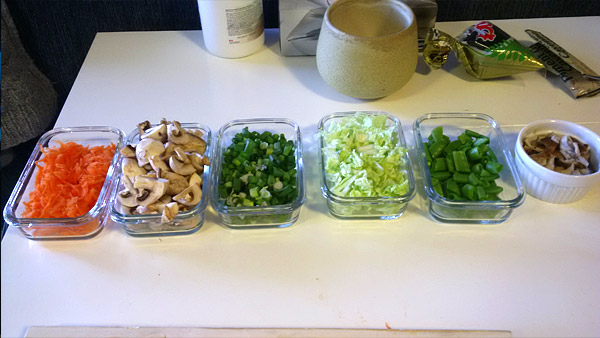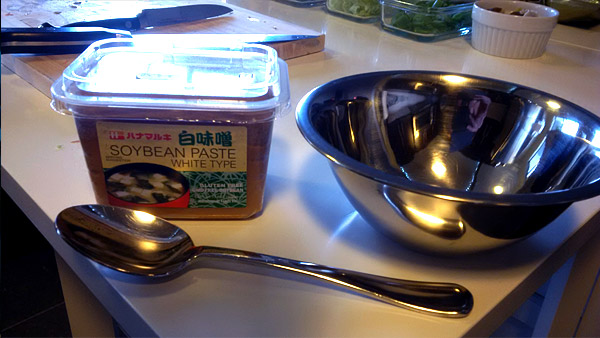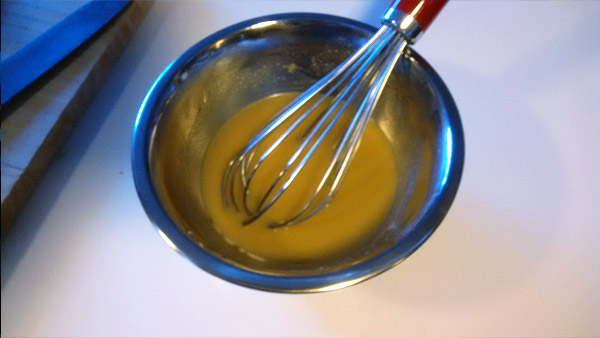
This delicious vegan miso udon soup is one of many different ways to get fermented food into your diet. In this case the aforementioned ingredient is miso, which is a fermented soy paste. The benefits of fermented foods are myriad, and include helping in weight loss, creating and enhancing the nutritional benefits of other foods, removing toxins and harmful bacteria found in many foods, improving digestion, supporting immune function, preserving and creating important enzymes, increasing omega3 fatty acids, vitamin B levels, and much more.
And it’s bloody delicious.
This soup is a really affordable, satisfying meal. I looked all over the place to find a recipe I liked for this soup, but could not find one, so I ended up improvising a lot with ingredients and portions until I came up with something that most tasted like the delicious miso soups I’ve had in restaurants, except without all the processed ingredients. I generally cook by gut feeling, so I don’t record exact measurements unless they’re absolutely necessary, but for the sake of this post, I have measured things out. Feel free to modify it to your desired volume and consistency. This particular recipe would serve about four in pretty much a meal portion.
NOTE: I could not find some ingredients for this soup at mainstream supermarkets. Luckily for anyone living in Etobicoke, Sandown Market is the place to go. Most Japanese markets/stores should have these same ingredients, as well as any Korean markets I’ve been to in the GTA. The products that were difficult to find were white miso paste, dried shredded seaweed, fresh/frozen udon noodles, and fresh tofu. You can often get generic brand udon noodles in the regular supermarket, but they are suspiciously on the dry goods shelf with no due date, and while they tasted good the first time, by the second I found they tasted distinctly not…food-like. As for tofu, you can get that anywhere, but fresh is best, and if you can’t get fresh tofu, try to at least get the softest tofu you can. Tofu should be stored in the fridge in a container with water covering about 1/3 of it. Fresh tofu will turn you off the supermarket version forever.
INGREDIENTS:
6 cups vegetable stock
½ cup water
5 shiitake mushrooms
Extra-light olive oil
Tofu (1 supermarket package or 2 small fresh bricks)
Salt (recommend sea salt)
Fresh ground pepper
Garlic powder
10 white/button mushrooms
2 medium-sized carrots
15-20 snow peas in shell
5 green onions
3 large Chinese cabbage leaves
2 individual packages Udon noodles
Dried, shredded seaweed
Cayenne pepper
- Prepare the shiitake mushrooms. Put shiitake mushrooms in a small pot and add 1-1/2 cups of water (it shouldn’t cover them). Cover and bring water to a boil on medium heat. Remove from heat and set aside.
- Fry the tofu. I personally had never deep-fried anything before this, and was a little nervous to, but it turns out it’s easy as pie if you pay attention to what you’re doing. Still, I always keep the baking soda nearby, just in case. First, cut the tofu in half horizontally, and pat it with paper towel to absorb as much moisture out of it as possible. Next, cut up tofu into bite-size cubes. Soft tofu will likely crumble a bit, and that’s just fine, too. Then, take a medium-sized frying pan and pour in enough olive oil to generously cover the bottom. Before turning on the heat, put a metal strainer in your sink and cover the bottom with a double layer of paper towel – this is where you will drain your hot tofu when it’s done. The paper towel will keep the oil from going down the drain and you can just throw it out after it’s cooled. Back to the frying pan – add some salt, pepper and garlic powder to the oil. Tofu is fun that it will easily absorb any seasoning, so you can really add anything you want, but in this case, salt, pepper and garlic powder is perfect. Turn the heat on high.
PRO TIP: add the tofu to the oil right away, before the oil heats up, to avoid getting splashed by super-hot oil.
With a spatula, constantly stir the tofu. Do not look away for a second. Do not assume it’s okay if you cannot see it. It should take about 5 minutes to cook to a golden brown. Once it has, it takes under a minute to turn to an inedible charred black, so keep that in mind. When it has reached the desired colour, hold the pan above the heat for a few seconds to let the boiling oil calm down, then dump it directly into the pre-prepared, paper towel lined strainer.
- Prepare the stock. Put vegetable stock on medium heat. Strain shiitake mushrooms directly into the stock (so the water the mushrooms were cooked in are added to the stock). Set aside mushrooms. Add ½ cup water to the stock.
- Prepare water for noodles. At the same time as heating up the stock, start boiling water for udon noodles. It only takes a couple of cups of water.
- Prepare the vegetables. Keep all vegetables separate until adding to soup. Peel and shred the carrots. Finely chop the Chinese cabbage. Finely chop onions, including the greens. Cut button mushrooms into quarters with stems removed. Remove stems from shiitake and finely chop. Remove tips from peas and cut into medium-sized diagonal slices.
- Prepare the miso. Once the stock has come to a boil, turn the temperature down so it’s no longer boiling, but don’t remove from burner. In a small, separate mixing bowl, add two tablespoons of miso paste (my tablespoons are admittedly heaping). Add one ladle-ful of boiling stock to the bowl. With a whisk, mix the stock and miso paste until it is fully dissolved. Set aside. This step is very important – if you add the miso paste directly to the stock it will not dissolve entirely, and therefore will not flavour the soup but instead will be sort of gross chunks of grit.
- Putting it all together. Turn the burner the stock is on back up to medium. By now the noodle water should also be boiling. Add onions and carrots to stock. Wait about one minute. Then add mushrooms (all of them). At the same time, remove the noodles from their package and add them to the boiling water in the other pot. The noodles should cook for about three minutes (until they break out of the shape of the package and come loose).
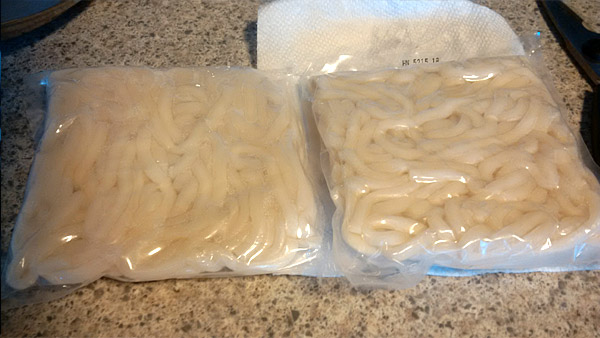
Udon noodles in package. Concurrently, add tofu and cabbage to the stock. Slowly stir in the miso. When the noodles are ready, add to the stock along with the snow peas. Add seaweed and cayenne. Remember this seaweed is going to more than double in size when it is re-hydrated, so keep that in mind for the amount you care to have in your soup. As for cayenne, I like my soup to have a good bite, so I’m good for a whole teaspoon, but if you don’t like spicy, season to taste. Give the whole thing a good stir.
- SERVE IMMEDIATELY. This soup is best if eaten right away. If you are not going to eat it right away, consider not adding the noodles until you’re ready to eat – they will disintegrate if left too long.
And that’s it! While this recipe may look like a lot of work, it really isn’t, especially if you can manage a team effort and have one person chopping the vegetables while the other does all the other prep. By myself it took less than an hour.
This is a great, fully vegan miso udon soup recipe that will impress your vegan guests (and vegan self, if you are one). If you want to meat it up a bit, try replacing the vegetable stock with chicken stock, and the tofu with either chicken or beef. But really, it’s so delicious as a vegan dish, I can’t imagine why anyone would want to add meat. It’s so healthy, we actually always feel brighter and more energetic after eating it. And what’s great is you will have enough raw ingredients left over to make it several times, reducing the overall cost to pennies per bowl.
Enjoy!
~R.K. Finch
* If you need a recipe for vegetable stock, just let us know in the comments below.

